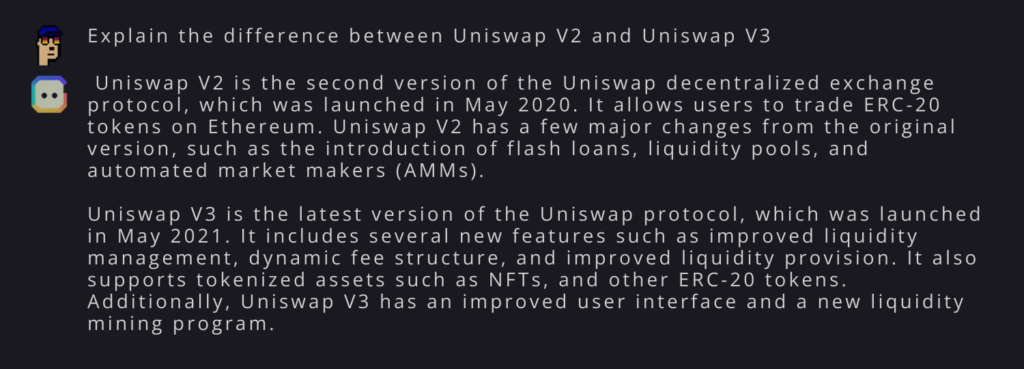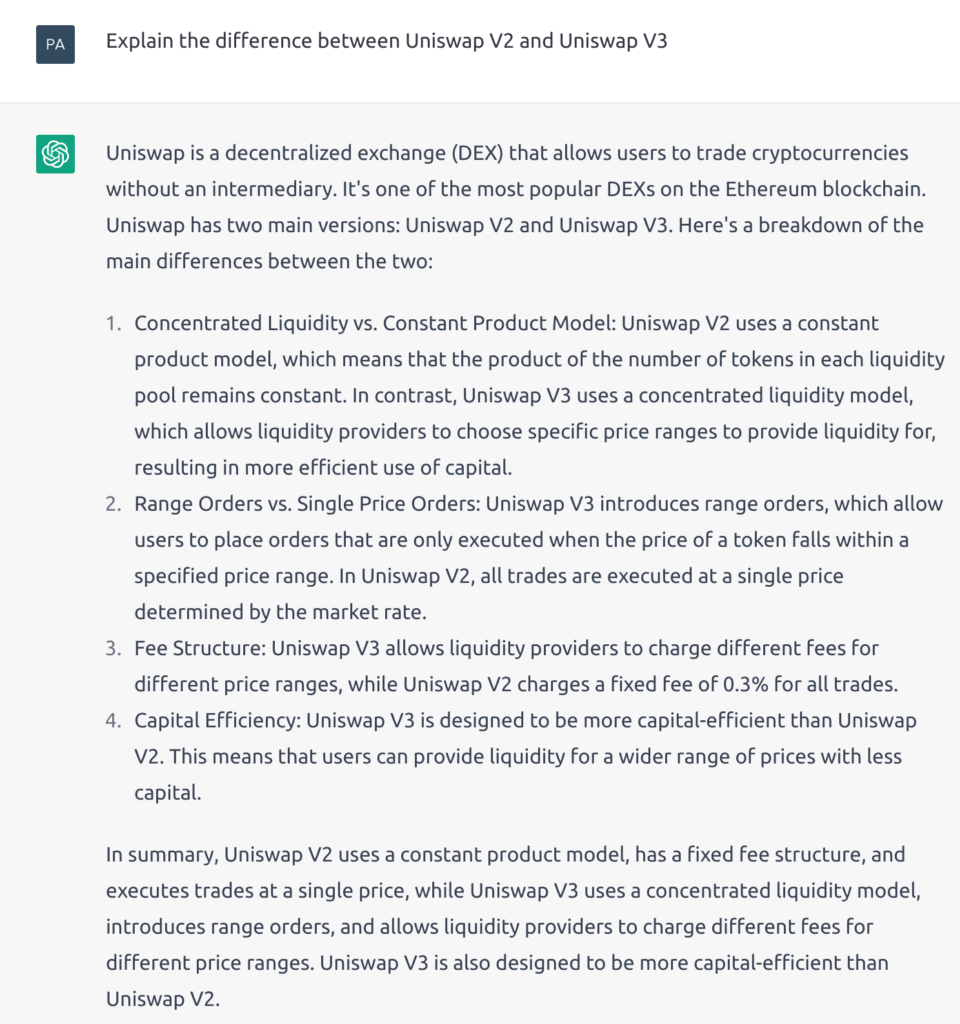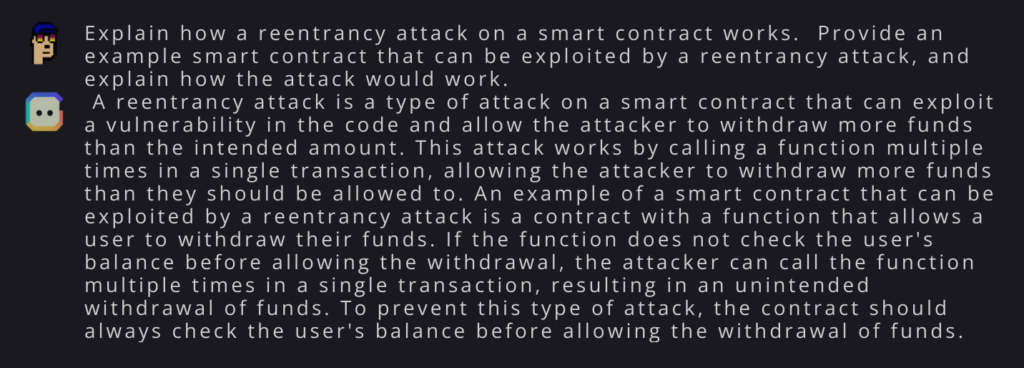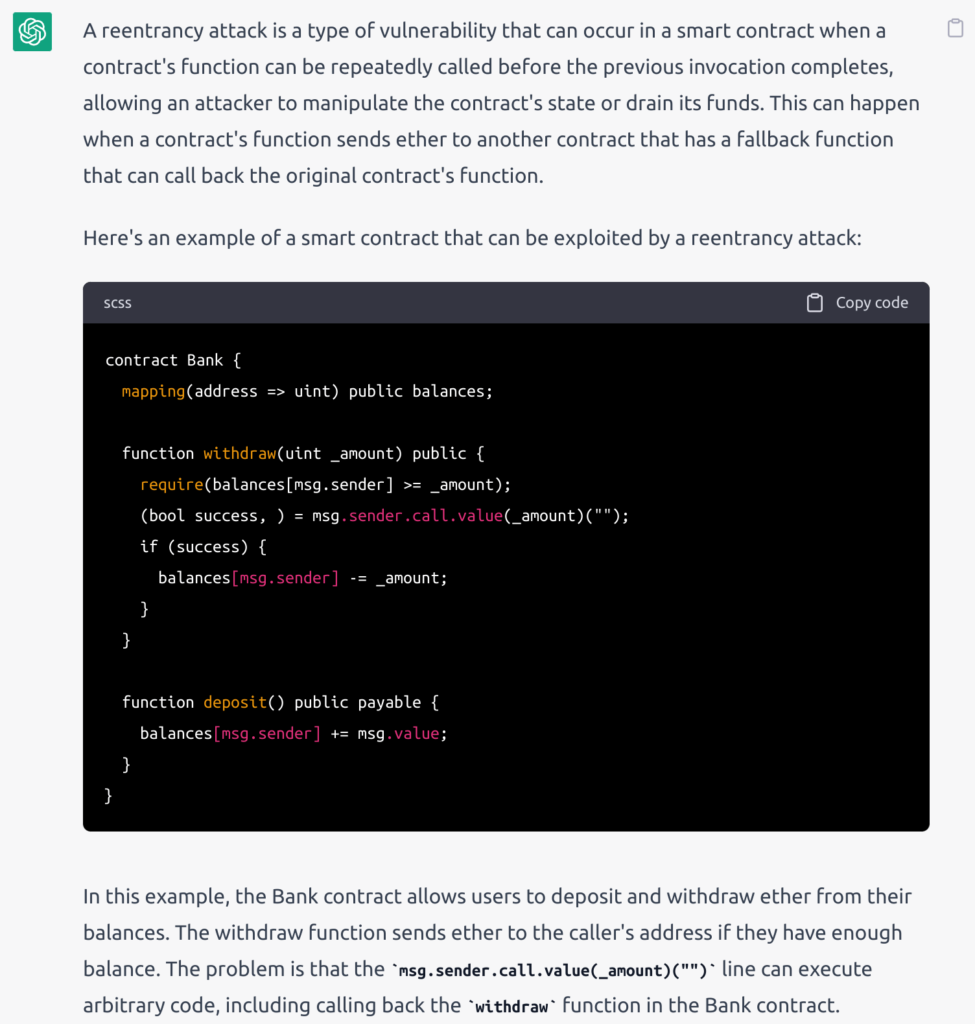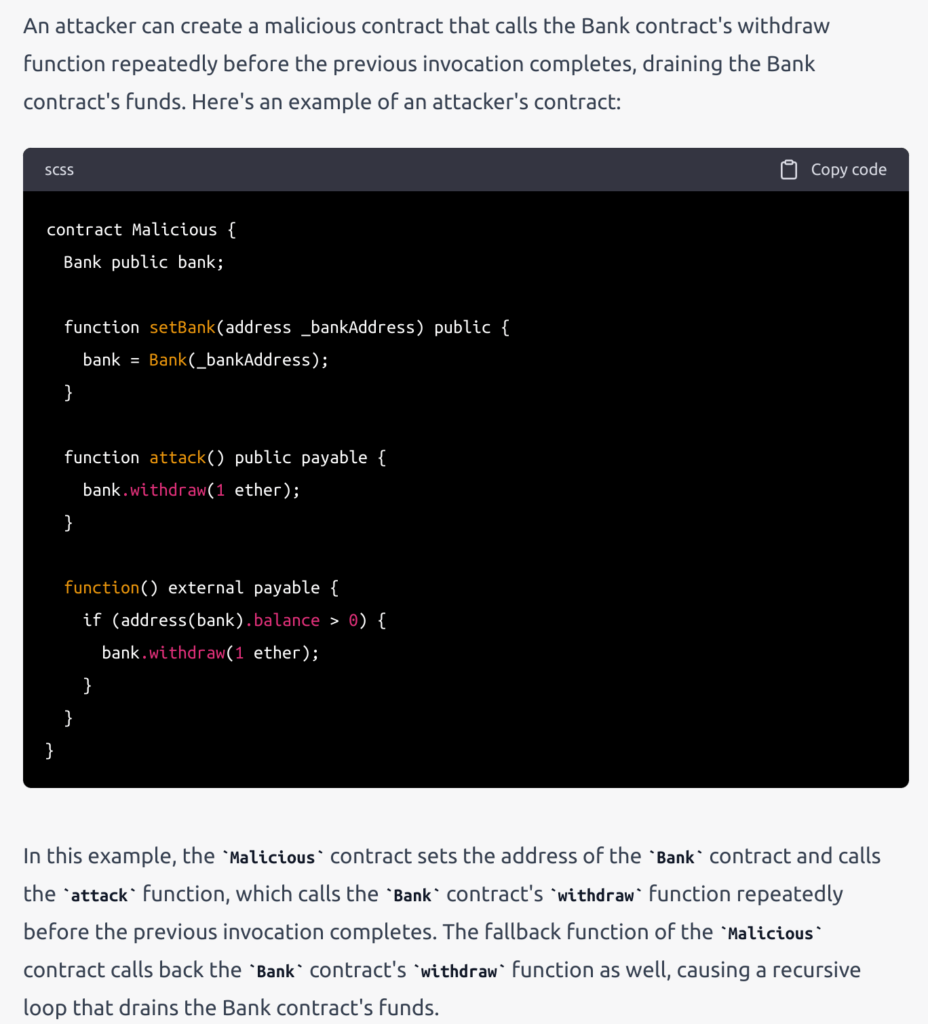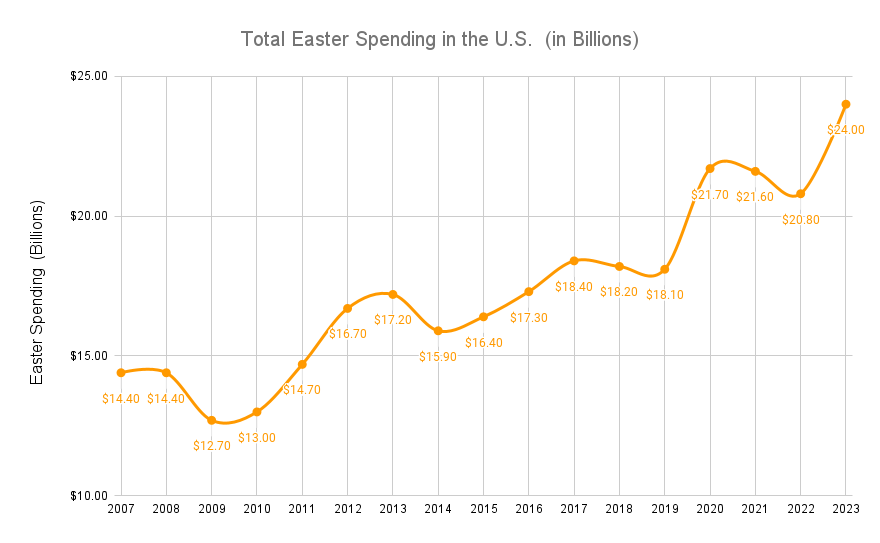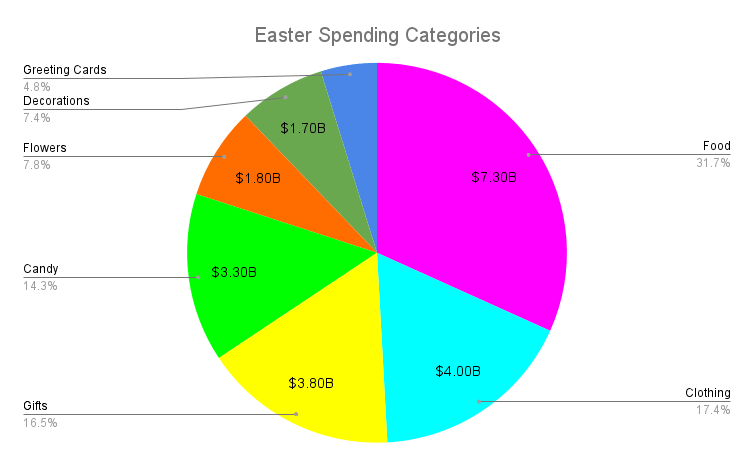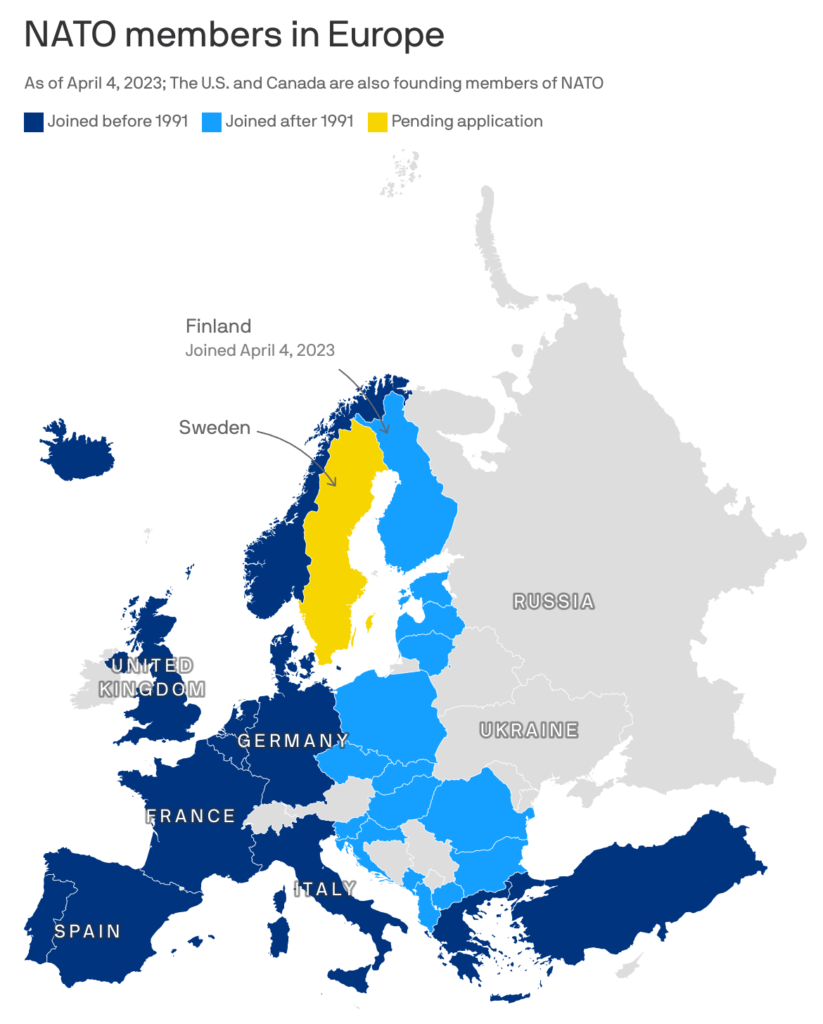Finland became the 31st member of NATO today (there are 29 members in Europe and 2 in North America). That means if Russia invades Finland, other NATO countries (including the U.S.) would be obligated to defend Finland under Article 5 of the North Atlantic Treaty. In this article, I’ll cover the risks and opportunities that Finland’s NATO membership creates for investors.
Certain defense contractors will benefit from Finland’s need to supply its military with NATO ammo & equipment
Before Finland had even been admitted to NATO, the country teamed up with Sweden (another pending NATO applicant) to acquire new NATO-compatible rifles for their militaries. The two countries signed an agreement on March 27, 2023 to acquire these weapons from a Finnish arms manufacturing company, SAKO. As Finland now begins officially integrating with NATO, the country may require additional NATO-compatible military equipment & munitions, and the defense contractors which supply those will benefit.
NOTE: SAKO is owned by the Italian company Beretta Holding. Beretta is a private company, but if you can get access to stock in the company, it may be worth investigating.
Finland joining NATO also increases the risk of a NATO-Russia conflict which may provide an additional opportunity for key defense contractors to generate more revenue than currently anticipated by the market.
Finland’s total military spending may not increase
Despite what I just said about certain defense contractors benefiting from Finland’s acquisition of NATO-compatible munitions and equipment, Finland’s total military spending may not increase. NATO members are expected to spend about 2% of their GDP on defense. Finland’s 2023 budget already includes military expenditures worth 2.25% of the country’s GDP which means it has already surpassed NATO expectations. It’s unlikely therefore that Finland’s NATO membership will have any direct impact on the total amount of Finland’s military spending unless Russia invades Finland.
U.S. government contractors are more attractive investments
Finland joining NATO increases the probability of a NATO-Russia conflict which increases the probability of U.S. involvement in a major war which increases the probability of U.S. defense contractors being called upon to supply greater quantities of military equipment and munitions. That makes U.S. defense contractors’ stock more attractive.
Finland’s government bonds are now more attractive than they were (but are still unattractive)
NATO membership means that Finland as a country is MUCH more likely to be able to survive an attack by Russia. That increased resilience and stability means that Finnish government bonds are more attractive now than they were when Finland wasn’t a NATO member. That increased attractiveness will provide a slight downward pressure on Finnish interest rates as more foreign investors buy the country’s bonds.
The downward pressure on interest rates will in turn provide a slight stimulating effect on the economy which will slightly exacerbate inflation in the country which currently sits above 8%. That’s much higher than Finland’s 10-year bond yield of just over 2.8% which means that even though Finnish bonds are more attractive than they were before the country joined NATO, the bonds still have deeply negative real yields and hence aren’t very attractive investments.
References
[1] OEC Finland Economic Profile
[2] NATO
[3] Conflict in Ukraine spills over to the Baltic Sea and the Arctic. High North News.
What is the difference between NATO and the United Nations (UN)?
NATO is an alliance of 31 countries organized to provide military security to its members while the UN is a more general organization with 193 member countries organized to promote international peace, security, economic development, and human rights.
Additionally, NATO is a highly structured organization with a clear chain of command while the UN is a more loosely structured organization with a greater emphasis on consensus-building.
Both Russia and China are members of the UN but not of NATO.
Can NATO defeat Russia?
The U.S. has the most powerful military in the world, and NATO as a whole has significantly more military power by any metric than Russia. However, the U.S. also had more military power than Vietnam during the Vietnam War and yet the U.S. did not accomplish the outcome it desired.
Wars are not always as simple as who has the most power. If Russia’s goal was to destroy Ukraine, it could have already done so by dropping strategic nukes. However, Russia wants to own the land and resources of Ukraine not destroy them. That limits Russia to not use the full power of their military. A conflict between NATO and Russia might be similarly limited depending on what the objective was. However, if Russia invaded a NATO country, it is almost certain that NATO would be able to repel the invasion.
In summary, NATO is significantly more powerful than Russia and would almost certainly be able to repel any Russian invasion but may not be able to claim victory in a Vietnam-style guerrilla war with Russia.
If Russia attacked a NATO country like Finland, Russia would lose the resulting war.
Can Russia & China together defeat NATO?
Russia is struggling to even defeat Ukraine right now, and China does not have long-range aircraft carriers that could be used to conduct serious attacks on the U.S. half way across the world. In reality, the U.S. alone could likely defeat both Russia and China in a war. NATO as a whole would almost certainly win in a war against both Russia and China.
Can a country be kicked out of NATO?
Turkey is effectively waging war against Syria through it’s military action “Operation Peace Spring” which has caused many NATO members to be concerned over a possible Article 5 trigger. So could Turkey be expelled from NATO?
Unfortunately, while the UN Charter provides a legal mechanism for a member nation to be expelled, the North Atlantic Treaty does not. That means there is no simple legal way for NATO to expel a member nation.
There may, however, be a more complex legal way for NATO to expel a member nation. While it has never been tested in an international court of law, the North Atlantic Treaty does specify certain values that should be shared by the member countries. It could be argued that Turkey has deviated from many of these values which may provide grounds for expulsion if enough other NATO members decide they wish to do so.
What does Finland export?
Finland exported $83.1 billion worth of goods in 2021. The top 5 most exported goods were:
- Refined Petroleum ($4.48 Billion)
- Kaolin Coated Paper ($4.25 Billion)
- Cars ($3.46 Billion)
- Sawn Wood ($3.16 Billion)
- Large Flat-Rolled Stainless Steel Products ($3.14 Billion)
The countries which Finland exported the most to in 2021 were:
- Germany ($10.4 Billion)
- Sweden ($7.85 Billion)
- United States ($6.27 Billion)
- Netherlands ($5.21 Billion)
- China ($4.84 Billion)
These numbers do not include service exports.
What does Finland import?
Finland’s top 5 most imported goods in 2021 were:
- Crude Petroleum ($3.84 Billion)
- Cars ($3.53 Billion)
- Refined Petroleum ($2.96 Billion)
- Motor vehicle parts & accessories ($1.87 Billion)
- Broadcasting Equipment ($1.79 Billion)
The countries which Finland imported the most from in 2021 were:
- Germany ($13.4 Billion)
- Sweden ($11.9 Billion)
- Russia ($8.93 Billion)
- China ($5.79 Billion)
- Netherlands ($5.53 Billion)
What is the geopolitical importance of the Baltic Sea?
The Baltic Sea is essentially a huge salt water lake that touches the borders of Sweden, Finland, Russia, Denmark, Poland, and a few small Eastern European countries that most people never think about (see the map below). Oil, coal, and iron ore are the three most important commodities transported via ship across the Baltic Sea (mostly from Russia to Finland and other European countries).
In 2020, roughly 100 million tons of oil were transported through the Baltic Sea, accounting for about 10% of all oil transported by Sea in Europe. Most of that oil was transported from Russia to refineries in Finland, Sweden, and Germany.
In the same year, roughly 50 million tons of coal were transported through the Baltic Sea, accounting for about 20% of all coal transported by sea in Europe. Most of that coal was transported from Russia to power plants in Poland, Germany, and the Czech Republic.
And in 2020, roughly 30 million tons of iron ore were transported through the Baltic Sea, accounting for approximately 10% of all iron ore transported by Sea in Europe. Most of that ore was transported from Russia to steel mills in Finland, Sweden, and Germany.
Why does Finland have both a president and a prime minister?
Finland has both a president and a prime minister because the country has a semi-presidential system of government. The president’s power has been gradually diminished by constitutional amendments in 1991, 2000, and 2012, but the president still leads Finland’s foreign policy decisions and is commander-in-chief of the Finnish military. Meanwhile, the Finnish prime minister leads domestic policy decisions as a member of parliament.
Why is Switzerland not in NATO?
Switzerland chose not to join NATO because it wanted to maintain its status as a neutral country which could do business with any country and even broker political deals between countries in conflict. That has historically been a viable option for Switzerland because of its safe location deep in the interior of Europe, protected by tall mountains.
However, since 1996, Switzerland has participated in NATO’s Partnership for Peace (PfP) program. Additionally, support amongst the Swiss people for joining NATO has increased significantly since the start of the Russian-Ukraine war in 2022. If that war intensifies further, Switzerland may eventually decide they wish to join NATO just as previously-neutral Finland has now done.
Is Moldova in NATO?
Moldova is a neighboring country to Ukraine and is not a NATO member. The neutrality of Moldova is written into its constitution as a ban on any deployment of armed troops from other countries (even allies) on its territory.
Moldova is also the poorest country in Europe and has historically suffered territorial difficulties which would bring a lot of risk to NATO if Moldova became a member.
Why isn’t Israel a NATO member?
Israel is not a member of NATO because most NATO countries do not want to get involved in Israel’s frequent wars with Palestine and other Arab countries.
Under Article 5 of the North Atlantic Treaty, if a NATO member is attacked, all other NATO members must come to their aid. Since Israel is essentially under constant attack, NATO countries would essentially be declaring war on Palestine and possibly also Syria, Lebanon, and Egypt if they accepted Israel into NATO. Many countries in NATO do not want this.
Why isn’t Mexico in NATO?
There are numerous reasons why Mexico isn’t part of NATO. Mexican policy has generally sought to maintain good relations with all countries rather than aligning strongly with a particular set of countries. Mexico also shares a long land border with the U.S., and as such, has generally operated under the assumption that the U.S. would protect Mexico if necessary. Ironically, the border is also a point of contention between the U.S. and Mexico, and NATO membership may actually complicate how Mexico can interact with the U.S. over border issues.
Even if Mexico did want to join NATO, it’s questionable if it would be admitted due to Mexico’s political instability. Non-government cartels have enormous economic, political, and quasi-military power in Mexico. Most NATO countries would be very hesitant to ally themselves with a government that faces such serious internal challenges to its power and stability.
Why isn’t China in NATO?
China is controlled by an authoritarian communist government which conflicts with the Democratic governments of most NATO members. China also refuses to recognize the territorial boundaries in the South China Sea that are recognized by the U.S. which would set up an immediate conflict if both the U.S. and China were part of NATO. The U.S. also provides weapons to Taiwan despite China claiming Taiwan as part of China, which is another conflict that prevents China from joining NATO.

